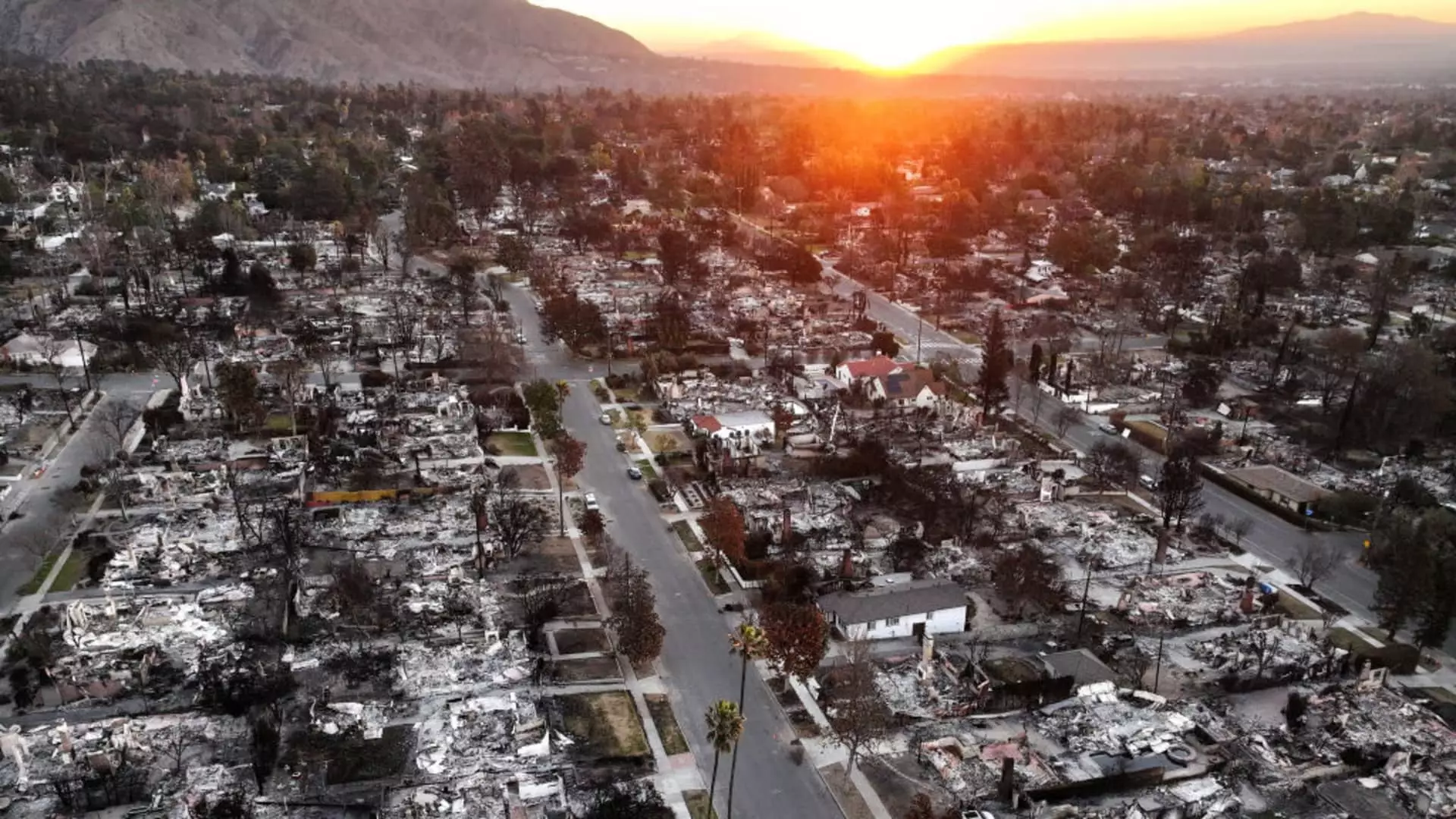In October 2023, the residents of Pacific Palisades, Los Angeles, were met with an unexpected and devastating event when wildfires swept through their community, resulting in widespread destruction. Among those affected was Dr. Damon Raskin and his family, who lost their home to the flames. The experience of watching one’s residence burn to the ground evokes profound emotions—grief, shock, and a sense of profound loss. Yet, even amid these overwhelming feelings, the Raskins made a bold decision: they resolved to rebuild. This juxtaposition of despair and determination encapsulates the dual reality that many families are now facing as they navigate the aftermath of such catastrophic natural disasters.
As the smoke clears and the embers settle, the emotional burdens attached to losing one’s home can be as heavy as the burgeoning recovery efforts. Rebuilding is not merely about physical structures; it symbolizes hope, resilience, and the desire to reclaim a sense of normalcy. Before the remnants of their home were even surveyed, the Raskins exemplified the spirit of countless Angelenos who are faced with the daunting task of reconstructing their lives after such calamity.
The scale of destruction caused by the California wildfires cannot be overstated. With more than 12,000 homes either damaged or destroyed, and estimates for recovery costs already exceeding $40 billion, the path to rebuilding is riddled with challenges. Dr. Raskin’s situation illustrates a broader dilemma impacting not just individual homeowners, but also state and local agencies tasked with overseeing recovery efforts.
Rebuilding requires more than just constructing homes; it involves a titanic effort to restore land that is now uninhabitable due to hazardous debris and contamination. Tom Grable, a high-ranking official in the construction industry, pointed out that while erecting new homes may seem straightforward, the task of preparing lots for rebuilding is a huge and intricate undertaking. It necessitates various stakeholders to take on coordinated efforts—which often encounter bureaucratic hurdles.
To facilitate this critical phase, state officials including Governor Gavin Newsom have initiated executive orders to ease permitting and review processes, thereby expediting cleanup operations. These measures reflect a recognition of the urgency and scale of the situation, showcasing the mobilization of resources toward one overarching goal: restoring homes and lives.
The Environmental Shift: New Regulations and Rebuilding
The wildfires in California have catalyzed a crucial shift in the way homes are constructed in high-risk areas. Approximately two decades ago, the Raskins’ home was built under less stringent fire safety regulations. However, recent innovations have led to more comprehensive building codes emphasizing fire resistance. Homeowners are now compelled to consider materials such as fire-resistant siding, advanced insulation, and specialized windows that can withstand harsh conditions.
This new focus presents a unique opportunity for families like the Raskins who are determined to rebuild better and safer. As they embark on their reconstruction journey, selecting technologically advanced and fire-resilient building materials becomes a priority. Insights gleaned from this disaster will help shape future construction practices and equip homeowners with the tools to protect their investments from the threat of natural disasters.
For most homeowners in the wake of a disaster, navigating the insurance claims process is one of the most significant hurdles. The aftermath of the recent wildfires reveals complications that homeowners must prepare for, compounded by a reality where many major insurers have retreated from California due to previous wildfire incidents. This has left many families, including the Raskins, grappling with inadequate coverage options during a time of immense financial stress.
Dr. Raskin’s experiences with the California FAIR Plan—a last resort for homeowners unable to obtain traditional insurance—highlight the precarious position many find themselves in. The coverage may help with rebuilding efforts, yet it rarely compensates for the personal belongings lost in the fire. Homeowners need to be proactive and may even consider hiring public adjusters to help maximize their claims as they strategize ways to recover losses.
Recovery from the recent wildfires in Los Angeles will be neither quick nor easy. Predictions suggest a slow and uneven process, dominated by smaller contractors rather than major construction firms specializing in large developments. Such nuances indicate that the road to recovery will be measured in ones and twos rather than a rapid resurgence of construction.
As families like the Raskins adjust to life in temporary accommodations, the community’s resilience is put to the test. The emerging paradigm of better building practices, enhanced support systems, and a proactive approach to insurance will only yield tangible benefits if embraced wholeheartedly. While the scars of loss will linger, the commitment to rebuilding—both homes and lives—stands as a testament to human strength.
The journey to recovery after an event as traumatic as a wildfire extends beyond mere construction. It is about healing, resilience, and the unwavering spirit of those who are determined to rise from the ashes—together.

